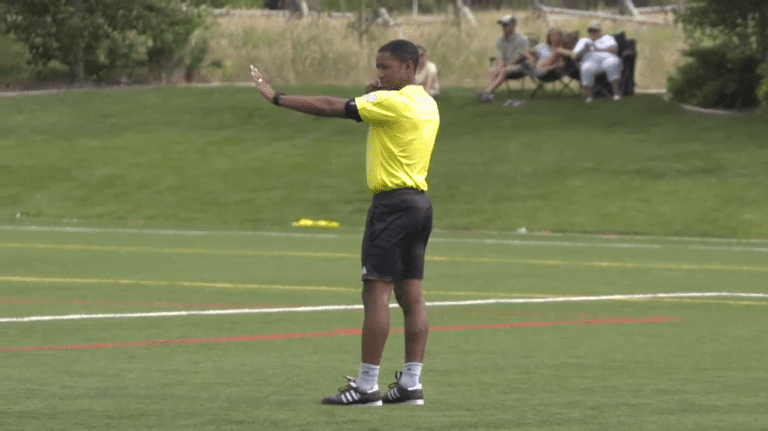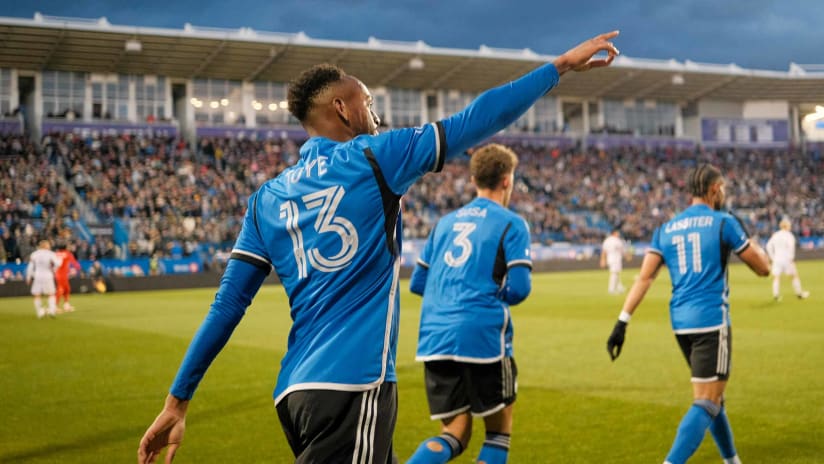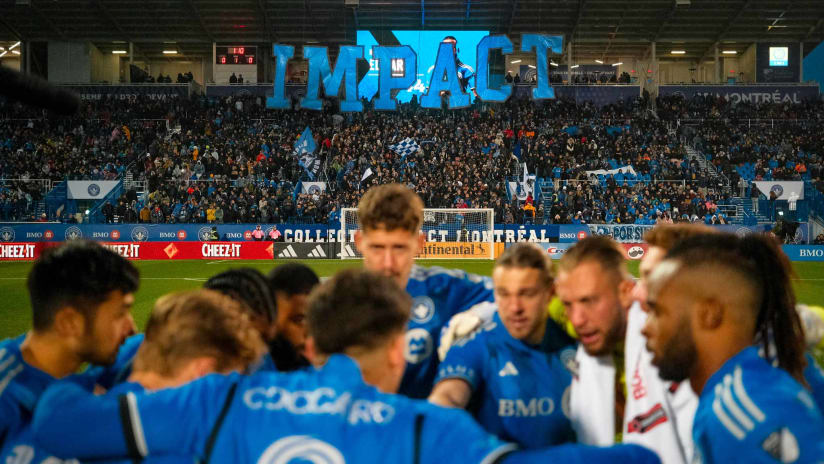From now on, all games will benefit from Video Review
Soccer finally enters the 21st century. As of Saturday, all MLS games will take advantage of a video assistant referee (VAR), who will have access to all broadcast camera angles and will help guide the head referee in four different, specific situations: when a goal is scored, when a penalty is called, when a red card incident occurs, and when there is a situation of mistaken identity.
We must know that the VAR and his assistant will watch the game live and continuously verify possible controversial actions. Howard Webb, a former renowned English referee and responsible for the video replay system’s implementation in MLS, explains in this hour long seminar that the VAR will look for minimum interference for maximum benefits.
Practically, on the pitch, the head referee will have two new signs linked to the new procedure: a finger to the ear and an outstretched hand to signify that the VAR is currently undertaking verifications…

and a rectangle representing a TV screen to show that a replay is necessary to review a recent action.
Moreover, if the head referee makes a clear, evident mistake for the VAR, he or she does not have to go watch a replay to change the decision. Also, when play restarts quickly after a phase of play that might warrant a replay, it is too late to come back on the action.
After a goal
To determine if a goal is valid, the video replay system will allow the referees to go over the attacking phase of play to determine if a foul, an offside or any other offense was committed by the attacking team, or if a negated goal should be given. Remember that if the ball crosses the goal line after the whistle has blown, a goal cannot count; reversely, if the whistle is given after the ball enters the net, a goal could be valid.
After a penalty decision
Video replay could be used to confirm if a penalty is valid, or to give a penalty and, if required, the necessary disciplinary measure. Once again, if an offense was committed during the attacking phase of play, the penalty decision can be reversed.
Furthermore, encroaching goalkeepers and players will be gawked upon by the cameras if they benefit from this infringement, respectively to make a save or to score on a rebound.
After a red card incident
Actions leading to a sending off or fouls susceptible to warrant a red card, will also be reviewable on a screen by the head referee. In this regard, an attacking phase of play leading to a red card for denying an obvious goal scoring opportunity (DOGSO) will be reviewed for any wrongdoing; if a foul or an offside has been committed in the previous forward build-up, the red card will be rescinded, but for serious foul play or violent conduct, the sending off will be maintained, even if an offense has been noted.
We need to specify that second yellow cards are not reviewable. Nonetheless, a red card can be switched for a caution and a yellow card can become red after the play is reviewed by the head referee.
Cases of mistaken identity
Referees will also be able to save the face after a case of mistaken identity – which happens very seldom – either of a player or of a team – for instance, if a handball is called against the defending team, but an attacker committed the foul. This review is valid as much for fouls as for yellow and red cards.
MLS is the third soccer league in the world to implement a video review system, after South Korea’s K-League and Australia’s A-League.





